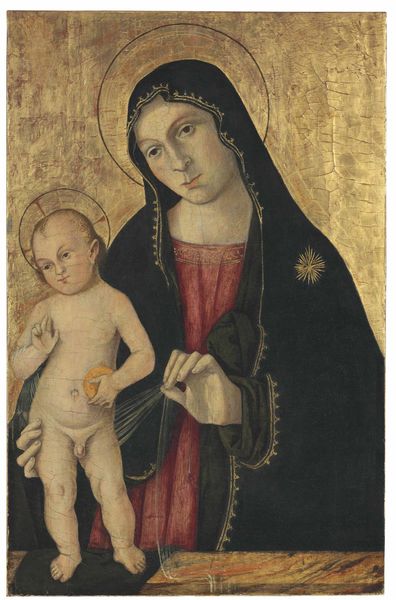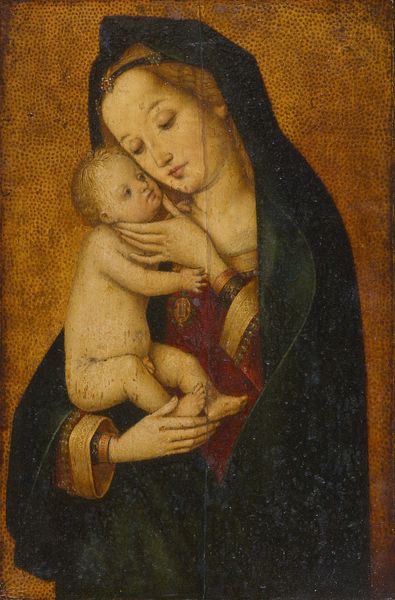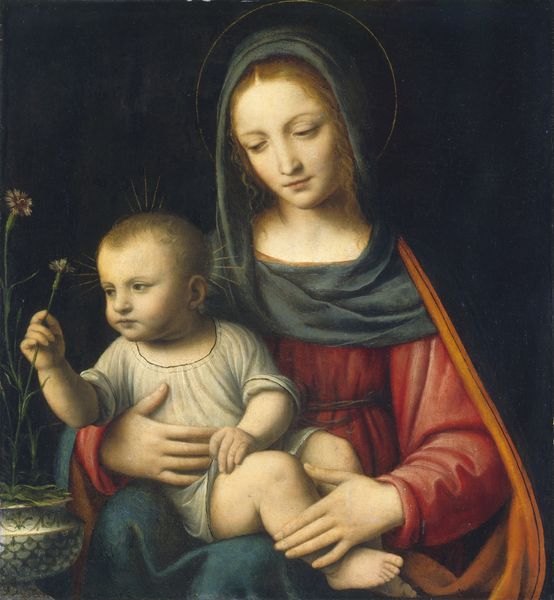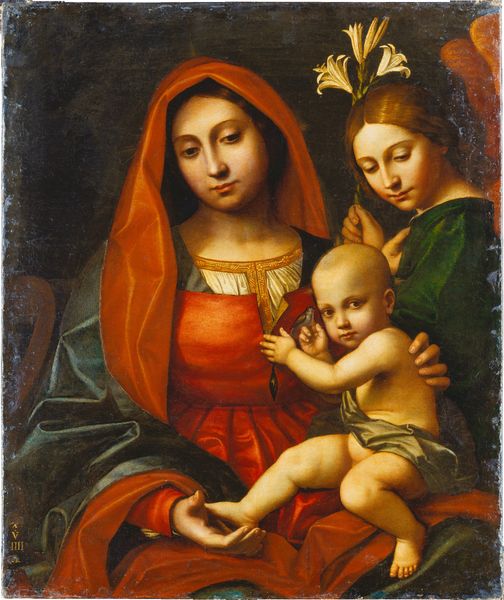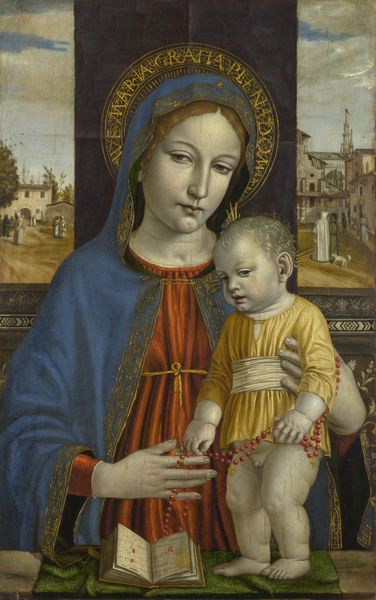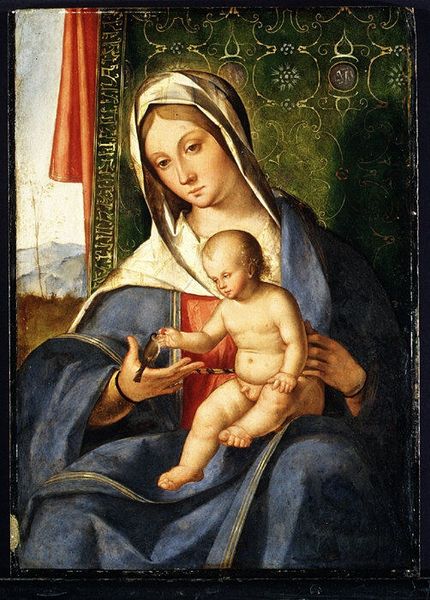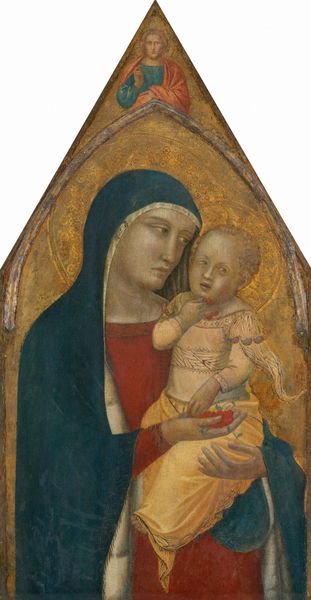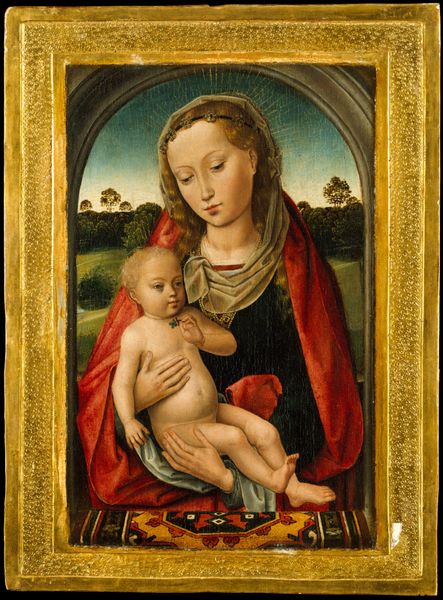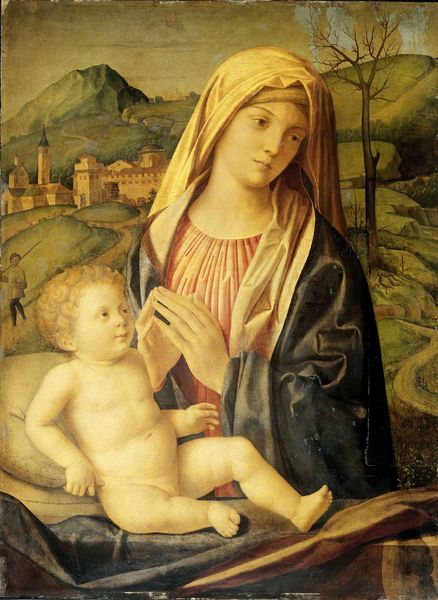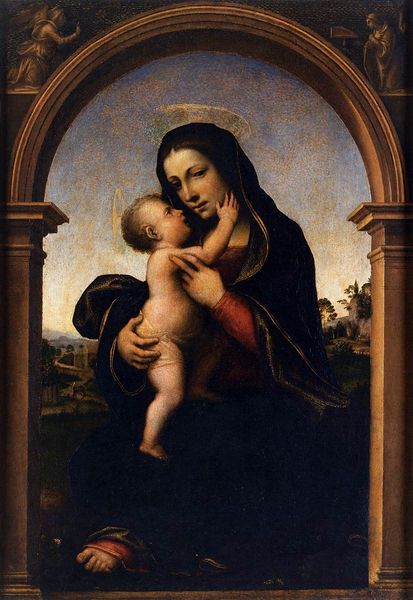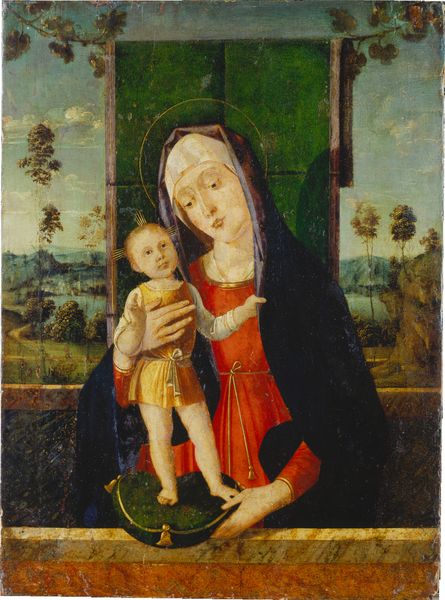
painting, oil-paint
#
portrait
#
painting
#
oil-paint
#
figuration
#
oil painting
#
history-painting
#
italian-renaissance
#
early-renaissance
Copyright: Public domain
Curator: Let's turn our attention to "Madonna and Child", an oil painting that’s often attributed to Antoniazzo Romano, characteristic of the Early Italian Renaissance. What’s your initial take? Editor: Well, immediately the somber tonality strikes me. There’s a muted quality to the palette. And the composition, while typical for its time, feels deliberately staged, almost a formal arrangement of shapes and lines. Curator: I see that, but beyond the formal elements, I'm drawn to the symbolic weight carried by the figures. The Madonna, cloaked in deep blues and blacks, traditionally signifies purity, authority and, yes, also sorrow in some readings, looking pensively downward, almost foreshadowing the future of her child. Editor: Precisely. The Madonna’s gaze creates a distinct diagonal line, contrasting with the baby Jesus who is looking elsewhere. It’s as if their visual connection is deliberately fractured. The gaze functions almost like a semiotic marker. Curator: Exactly. His gaze is not to her, not to us, but upward toward a spiritual connection to something unseen. Notice also how Mary holds a thin end of cloth in her right hand – what does this reference in terms of cultural memory? Editor: If the oil paint's layering suggests depth and shadow, then the soft treatment of light creates the tender feel, and draws our eye towards the skin and the haloes of both mother and child. A halo is a repeated visual representation of holiness, or, sometimes even more plainly, importance. Curator: Yes, and this painting resonates within a specific visual language rooted in Renaissance theology and social values. It shows what was considered as sacred as what was valued most in that era. Motherhood, childhood, family values, purity. Editor: In terms of compositional values, you could also interpret the subdued color palette as signifying those same restrained cultural ideals, which, despite the holy subject, remains firmly material. Curator: Indeed, it’s a work that reflects both the spiritual aspirations and the earthly realities of its time. What I see is how much symbolism speaks not just of an era, but to enduring human feelings. Editor: It seems this is where those artistic brushstrokes provide depth and shape both meaning, and representation, I find, for viewers, is quite subjective. Thanks!
Comments
No comments
Be the first to comment and join the conversation on the ultimate creative platform.
